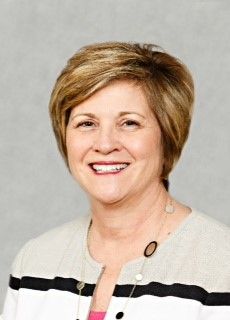New Rite-Aid telebooths provide consumers quick physician access
HealthSpot’s telebooths, which are currently in more than 20 Rite-Aid stores, are changing how patients interact with healthcare. Find out how it works.
Using telehealth services creates better access and engagement of consumers, which leads to reduction of medical costs and improvement in health outcomes for their populations, according to a recent presentation at the “Disrupted. The Business of Healthcare.” executive conference held in Cleveland this month.

Croall“There is a shift from the doctor will see you now to the patient will see you now,” says Gail Croall, MD, chief medical officer at HealthSpot, a Dublin, Ohio-based telehealth firm. “Just like the banking industry shifted when ATM, mobile and online banking became available, going into a bank for banking services decreased since services could be supplied through technology. Consumer demand for access and convenience will drive continued need for technology to adapt to different ways healthcare services can be delivered.”
Related:Telehealth reimbursement under the microscope
According to a Mordor Intelligence report, "Global Telemedicine Market - Growth, Trends & Forecasts (2015-2020)," the global market for telemedicine is expected to be worth more than $34 billion by the end of 2020.
An August 2014 Deloitte study calculated there would be 75 million virtual visits in North America in 2014 and that the potential exists for as many as 300 million visits a year. According to analysis by Towers Watson, telemedicine could potentially deliver more than $6 billion a year in healthcare savings to U.S. companies. The analysis also found that 37% of employers planned to offer their workers telemedicine consultations in 2015, with another 34% planning to do so by 2017.
“Telehealth solutions can not only reduce unnecessary emergency room visits but we see it as a front door to healthcare where it is seen as an extension of the medical community which can help outcomes across the continuum of care from wellness and prevention to chronic condition management as well as help payers address quality measures for those lower-intensity populations,” Croall says.
According to Croall, 39% of future costs will come from 75% of the health population today.
“This allows shift in resources and focus of high-intensity patients in the secondary/tertiary and face-to-face visits and lower-intensity patients more in the community setting all the while keeping continuity of care and management within the local healthcare system,” she says.
NEXT: HealthSpot's telebooths in Northeast Ohio's Rite-Aid stores
Enter HealthSpot’s telebooths, which are currently in more than 20 Rite-Aid stores throughout Northeast Ohio.
“Essentially, think of it like ‘on-the-spot’ access to a primary care physician for ear, nose and throat-type of illnesses,” according to Croall. “An individual enters the booth, and a physician appears in real time via two-way video-similar to Skype-on the screen in front of the patient. The physician instructs the patient on several of the diagnostic tools in the booth-stethoscope, etc.-hears their symptoms and diagnoses the illness. If a prescription is needed, the physician can submit the prescription to the pharmacy. It’s using technology and connectivity to provide immediate access to care.”
The technology in the telebooth station can be adapted to specific populations-“whether cardiology with real-time EKG or three-dimensional dermatology imaging or imaging 3 mm beneath the skin for cancer detection or fundus cameras for diabetic retinopathy screens or spirometry for COPD management,” explains Croall. “This would also include point-of-care lab testing as well as expansion of pharmacist role in doing rapid strep tests or rapid flu tests in addition to vaccines and immunizations and medication management.”
Related: Consumerism increases retail opportunities and access to coverage and care
Croall explains the inclusion of telehealth in provider networks, fees and specialties. “Our providers are the local health system and most payers are reimbursing like they would as a face-to-face visit because of the integrated platform and integrated medical equipment where the physician can actually examine the patient using the equipment,” she says.
“Behavioral health is a visit type that can be supported in the station as well as our home video solution, and we are currently working with providers and payer to support these visit types. The message here is integrated telehealth can be a critical factor in population health management and shifts to value-based contracting with payers and create better access points and continuity leading to lower costs and better outcomes,” Croall says.
Doing More and Saving More with Primary in Home Care
September 1st 2021In this week’s episode of Tuning In to the C-Suite podcast, MHE Associate Editor Briana Contreras interviewed VillageMD’s Senior Medical Director of Village Medical at Home, Dr. Tom Cornwell. Dr. Cornwell discussed the main benefits of primary care at home, which includes the benefit of cost savings for patients, maintaining control of hospital readmissions and others. Dr. Cornwell also noted what has changed in the industry of at-home care and if there has been interest from payers like insurance companies and medicare in the service.
Listen